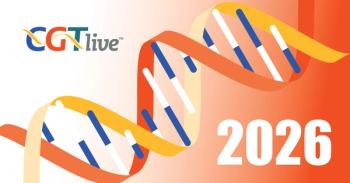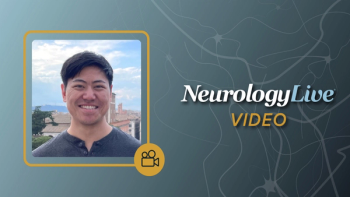
BMT for Severe Autoimmune Diseases: An Idea Whose Time Has Come
Studies of hematopoietic stem-cell transplantation as a treatment for severe autoimmune diseases (SADS) are currently in progress. Dr. Burt thoroughly reviews the rationale for these studies. It includes: (1) preclinical studies showing that marrow transplantation is an effective therapy in animal models of autoimmune disease; (2) observations of the effect of stem-cell grafts on SADS in patients transplanted for other indications; and (3) improvements in the safety of the transplant procedure.
Studies of hematopoietic stem-cell transplantation as a treatment forsevere autoimmune diseases (SADS) are currently in progress. Dr. Burt thoroughlyreviews the rationale for these studies. It includes: (1) preclinical studiesshowing that marrow transplantation is an effective therapy in animal modelsof autoimmune disease; (2) observations of the effect of stem-cell graftson SADS in patients transplanted for other indications; and (3) improvementsin the safety of the transplant procedure.
As shown in the author's Table 1,the primary diseases for which hematopoietic stem-cell transplantationis being considered for study include multiple sclerosis (MS), rheumatoidarthritis (RA), systemic lupus erythematosus (SLE), and systemic sclerosis(SSc). While often varying in severity, autoimmune disorders may resultin severe organ dysfunction, poor quality of life, and markedly shortenedlife expectancy in some patients. Each of these diseases predominantlyaffects young individuals. The goal of the initial studies is to establishwhether stem-cell transplantation has an acceptable level of safety inpatients with SADS and a beneficial effect on disease progression.
Selection of Autoimmune Diseases for Initial Studies
The criteria for defining such diseases as MS, RA, SLE, and SSc as autoimmunein origin have been discussed in Burt's article and elsewhere.[1] All fourof these diseases are potentially severe and have limited proven therapeuticapproaches, none of which is considered to be curative. Burt nicely summarizesthe prognostic criteria for MS, RA, and SLE, as well as the potential criteriafor selecting patients with these diseases for stem-cell transplantation.He also provides a comprehensive discussion of the evaluation of MS severity.
Less compelling cases can be made for developing studies of hematopoieticstem-cell transplantation for the other autoimmune diseases discussed inthe article because of their rarity or the effectiveness of existing treatments.However, once proof-of-principle is established in the current studiesof SADS, these other autoimmune diseases should be considered.
At the Fred Hutchinson Cancer Research Center, we have focused our initialstudies of stem-cell transplantation for SADS on patients with severe SSc.Systemic sclerosis is a disease in which the skin, lungs, heart, gastrointestinaltract, and kidneys are major targets for progressive and often relentlessfibrosis. Diffuse cutaneous SSc, the more severe form of this disease,is associated with Raynaud's phenomenon, both truncal and acral skin involvement,tendon friction rubs, an early and significant incidence of interstitiallung disease, renal failure, diffuse gastrointestinal disease, and myocardialinvolvement. The anticentromere antibody is usually absent in severe disease,and 40% to 60% of patients are positive for scleroderma-70 (SCL-70; specificfor topoisomerase 1). Organ failure may occur early in the disease course,and mortality in the most severely affected patients is 45% by 5 years--adeath rate similar to that of patients with chronic myelogenous leukemiain chronic phase.
Systemic sclerosis is a disease for which conventional immunosuppressivetreatment has not been proven to prevent disease progression. Prognosticcriteria that define a poor outcome are available, and patients can beselected for experimental treatment who have a poor prognosis and yet havesufficient organ function to tolerate the procedure. Although it is possiblethat some improvement in organ function may be seen once the autoimmuneactivity is ablated, it is unlikely that this will be substantial if thereis extensive preexisting damage. Thus, it is desirable to perform the transplantearly in the disease course.
Source of Hematopoietic Stem Cells: Autologous or Allogeneic?
Autologous--Although the efficacy of transplanting autologous,syngeneic, and allogeneic stem cells has been demonstrated in animal studiesof autoimmune disease, these studies also have indicated that allogeneictransplantation is likely to be more effective than autologous transplantation.In the limited number of clinical cases reported to date, high-dose cytotoxictherapy followed by transplantation with unmodified autologous hematopoieticstem cells was not curative, although transient remissions were noted.[2]Recurrence of disease in these cases may have resulted from the infusionof autoreactive effector lymphocytes with the autologous graft. T-celldepletion of autografts may contribute substantially to control of theautoimmune disease, and clearly this approach needs to be investigated.
Many of the proposed or current studies involve a form of T-cell depletionby CD34+ selection. The efficiency of T-cell depletion varies dependingon the type of methodology used for selection of CD34+ cells. A seconddepletion step may be required for highly efficient removal of T-cellsfrom the stem-cell grafts. The use of T-cell-depleted autologous graftsafter myeloablative therapy may result in a more prolonged immunodeficientstate than is usually observed after autografting.
Studies of immune reconstitution will be important after transplantationwith T-cell-depleted autologous grafts. If a benefit is observed, it willbe necessary to differentiate between (1) prolonged nonspecific suppressionof the immune system and (2) modulation of a component of the immune systemresponsible for the autoimmune activity.
A report has been published of a patient with SSc who received high-dosecyclophosphamide (Cytoxan, Neosar) and then was infused with peripheralblood stem cells that had been CD34+-selected on a Ceprate R column andT-cell-depleted with a CD3-specific monoclonal antibody.[3] At 6 monthsafter treatment, some clinical improvement was noted, as well as reductionin the titers of antinuclear antibody and SCL-70. This initial improvementobserved in one of the first patients undergoing high-dose chemotherapyand autologous stem-cell support for SSc is encouraging, but further follow-upis required.
Some of the other protocols outlined in Table1 of the Burt article are giving high-dose cyclophosphamide for immunosuppression,as well as antithymocyte globulin for in vivo T-cell depletion. Althoughmyelosuppressive, high-dose cyclophosphamide may not require support withautologous peripheral blood stem cells.[4-6] High-dose cyclophosphamidewithout the infusion of autologous stem cells may be more effective sinceit poses no risk of infusing autoreactive effector lymphocytes. Even thoughthis approach fails to test the hypothesis that myeloablative and immunosuppressivetherapy of sufficient intensity to require stem-cell support may be beneficialin the management of SADS, it is reasonable to explore the efficacy ofhigh-dose cyclophosphamide in the hope that more aggressive approachesmay not be necessary.
The European Group for Blood and Marrow Transplantation and the EuropeanLeague Against Rheumatism recently recommended that only studies of autologoustransplantation should be conducted initially because of the high mortalityassociated with allogeneic transplantation. However, as Burt notes, patientstreated with autologous grafts still have an expected mortality of 1% to10%. There is also a risk of a myelodysplastic syndrome developing aftermyeloablative therapy and autologous transplantation.[7] Patients who havealready received extensive alkylating agent therapy prior to transplantationare at increased risk of this complication. The risk may be lower in patientsreceiving treatment with high-dose cyclophosphamide alone.
Allogeneic--Allogeneic or syngeneic hematopoietic stem-cell transplantationmay be more effective than autologous transplantation because allogeneicor syngeneic grafts are not contaminated by autoreactive effector lymphocytesthat may perpetuate the disease. Moreover, the graft-vs-host effect associatedwith the infusion of allogeneic donor lymphocytes may suppress host lymphopoiesis,including the production of autoreactive effector lymphocytes.
A major impediment to the use of allogeneic stem-cell transplantationis the potential for significant morbidity and high mortality. However,mortality has decreased significantly after allogeneic transplantationas supportive care has improved.[8,9] Survival at 3 years after transplantationof allogeneic grafts from HLA-matched siblings is greater than 90% forpatients with aplastic anemia and greater than 80% to 85% for patientswith chronic myelogenous leukemia in chronic phase.[10,11]
In general, patients have been considered for allogeneic marrow transplantationif there are data showing poor survival with conventional treatment andif there is a reasonable expectation that the disease can be cured. Preservationof critical organ (eg, central nervous system) function may be an equallycompelling indication for transplant. Patients should not be consideredfor allogeneic transplantation if they have markedly advanced disease withsignificant organ dysfunction, which might unduly increase the risk oftransplant-related complications.
Transplantation early in the disease course improves outcome in severaldiseases for which transplantation is indicated. Intuitively, this wouldalso appear to be true for those patients with SADS who are being consideredfor marrow transplantation since organ dysfunction may increase the riskof toxicity from the conditioning regimen and also compromise the administrationof prophylaxis for graft-vs-host disease (GVHD).
Approaches are being investigated to minimize the risk of transplant-relatedmortality from the myeloablative therapy necessary to establish an allogeneicgraft or from complications related to GVHD. The establishment of substantialmixed hematopoietic chimerism in a large outbred dog model can be achievedafter low-dose cytotoxic therapy without prolonged periods of pancytopenia.[12]A state of donor-host allogeneic tolerance has been noted in these dogs,which are mixed chimeras.
If this preclinical study proves to be predictive of what can be achievedin humans, mixed chimeric states might be induced in patients with minimalrisks from the transplant procedure. The induction of mixed hematopoieticchimerism alone may provide some relief from the autoimmune disease. Ifnot, it will be the first step in establishing full donor chimerism byinfusion of donor lymphocytes, potentially eradicating autoreactive hostlymphocytes.
Conclusions
Current management of many SADS is suboptimal in preventing progressionand loss of organ function or life in some patients. Studies of hematopoieticstem-cell transplantation after myeloablative therapy or high-dose cy-clophosphamide represent an exciting step that holds promise for the treatmentof poor-prognosis patients with SADS.
Substantial improvements have occurred in the supportive care of patientsafter both autologous and allogeneic transplantation. However, there maybe unanticipated problems in patients with SADS that could increase therisk of the procedure. To expedite the accrual of patients and the completionof studies, investigations of hematopoietic stem-cell transplantation inSADS should be carefully performed in a limited number of centers by multidisciplinaryteams, until the safety and efficacy of this procedure are proven. Thesemultidisciplinary teams should include experts in the autoimmune diseaseunder study and a transplant team with a high degree of experience.
References:
1. Rose NR, Bona C: Defining criteria for autoimmune diseases (Witebsky'spostulates revisited). Immunol Today 14:426-430, 1993.
2. Euler HH, Marmont AM, Bacigalupo A, et al: Early recurrence or persistenceof autoimmune diseases after unmanipulated autologous stem cell transplantation.Blood 88:3621-3625, 1996.
3. Tyndall A, Black C, Finke J, et al: Treatment with systemic sclerosiswith autologous haemopoietic stem cell transplantation. Lancet 349:254,1997.
4. Brodsky RA, Sensenbrenner LL, Jones RJ: Complete remission in severeaplastic anemia after high-dose cyclophosphamide without bone marrow transplantation.Blood 87:491, 1996.
5. Storb R, Buckner CD, Dillingham LA, et al: Cyclophosphamide regimensin rhesus monkeys with and without marrow infusion. Cancer Res 30:2195,1970.
6. Gianni AM, Tarella C, Bregni M, et al: High-dose sequential chemoradiotherapy,a widely applicable regimen, confers survival benefit to patients withhigh-risk multiple myeloma. J Clin Oncol 12:503, 1994.
7. Miller JS, Arthur DC, Litz CE, et al: Myelodysplastic syndrome afterABMT: An additional late complication of curative cancer therapy. Blood83:3780, 1994.
8. Storb R, Deeg HJ, Whitehead J, et al: Methotrexate and cyclosporinecompared with cyclosporine alone for prophylaxis of acute graft versushost disease after marrow transplantation for leukemia. N Engl J Med 314:729,1986.
9. Chao NJ, Schmidt GM, Niland JC, et al: Cyclosporine, methotrexate,and prednisone compared with cyclosporine and prednisone for prophylaxisof acute graft-versus-host disease. N Engl J Med 329:1225, 1993.
10. Storb R, Etzioni R, Anasetti C, et al: Cyclophosphamide combinedwith antithymocyte globulin in preparation for allogeneic marrow transplantsin patients with aplastic anemia. Blood 84:941, 1994.
11. Clift RA, Buckner CD, Thomas ED, et al: Marrow transplantation forchronic myeloid leukemia: A randomized study comparing cyclophosphamideand total body irradiation with busulfan and cyclophosphamide. Blood 84:2036,1994.
12. Storb R, Yu C, Wagner JL, et al: Stable mixed hematopoietic chimerismin DLA-identical littermate dogs given sublethal total body irradiationbefore and pharmacological immunosuppression after marrow transplantation.Blood, 1997 (in press).
Newsletter
Stay at the forefront of cutting-edge science with CGT—your direct line to expert insights, breakthrough data, and real-time coverage of the latest advancements in cell and gene therapy.






























